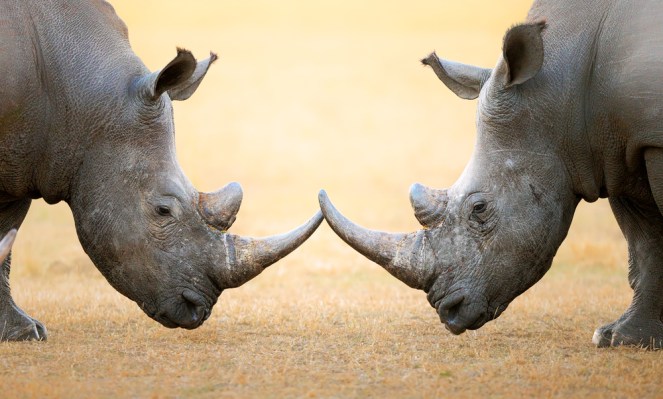Not since the extinction of the dinosaurs has Earth lost so much life. This time, however, it can’t be attributed to asteroids, volcanic eruptions or an ice age: Humans are the perpetrators.
According to the Center for Biological Diversity, 99 percent of today’s threatened species are at risk because of human activities, which range from habitat destruction to poaching. If this trend continues, 30-50 percent of all species could end up approaching extinction in the next 50 years.
Conservationists, academics and governments worldwide are working to fight this decline, and 3D technologies are offering new tools to aid in this pursuit. Below are a few examples of how 3D technologies are helping the animal kingdom in ways not previously possible.
Giving Animals A New Lease On Life
3D scanning and printing have had a huge impact within the prosthetics field for humans, eliminating much of the time and materials required. Instead of using plaster to create a messy and often inaccurate mold, doctors can now create a 3D model in minutes using a scanner, and print a precise prosthetic in just hours. 3D tools have done so much to improve accuracy and speed that we’re now able to apply it to other species.
3D-printed parts have helped a variety of different animals, from turtles (Cleopatra was given a 3D-printed protective layer for her weakening shell) to horses (Holly can walk without pain thanks to 3D-printed titanium horseshoes).
Grecia, a Costa Rican toucan, is just one of the latest examples. He lost the top half of his beak due to the violent acts of local kids. However, a successful crowdfunding campaign is making it possible for him to receive a prosthetic beak. Four local 3D tech companies, Ewacorp, Elementos 3D, Publicidad Web and Grupo SG (an Artec 3D partner), joined the effort.
A professional-grade 3D scanner was used to create a high-definition 3D model of the stump where the beak’s upper part had been. This is providing the geometrical data required for making a prosthesis that will allow Grecia to feed and clean himself. Once a viable material and attachment method are determined, the procedure could be replicated for other birds with this injury.
Protecting Endangered Species From Afar
Conservationists work tirelessly for endangered species, hoping the information they uncover will help find new ways to protect them. Drones equipped with cameras have emerged as a vital tool in the new 3D efforts, enabling humans to learn about species without disturbing their natural environments.
Because drones are manned from afar, they can be used to study and capture images of places that are either too difficult or too dangerous to be explored in person. 3D software can then be used to stitch into 3D models or virtual reality landscapes the thousands of images obtained. These immersive visuals offer researchers a whole new way to study massive terrains and easily share information with colleagues around the world.
Dr. Friedrich Reinhard, owner of a wildlife reserve in Namibia, is using this technology to help rebuild the black rhino population in Africa, which has been endangered by poaching.
3D technologies are helping the animal kingdom in ways not previously possible.
This strategy is not just limited to drones. This year, Carnegie Science deployed the Carnegie Airborne Observatory-3. Using the airplane-based mapping system, equipped with state-of-the-art imaging spectrometers and laser scanning (LiDAR) instrumentation, scientists were able to capture information on tree diversity across the Amazon, carbon stocks in Panama and Madagascar, wildlife habitats in Columbia and plant species in Hawaii, and even document never-before-seen lion behavior in South Africa.
According to Greg Asner, principal investigator of Carnegie’s Department of Global Ecology, creating a 3D map of the diverse forests throughout the world will allow his team to monitor vertical tree-line movement and determine the impact of climate change on forest growth patterns. Asner hopes to expand the ecological applications of 3D scanners, with the aim of one day using this technology to create the world’s first 3D animal mapping.
Eliminating Poaching
3D technology is enabling humans to fight the decline of animal populations on another front: poaching. Since 2011, there has been an increase in the number of black rhinos illegally killed for their horns, a coveted commodity on the black market.
To combat this trend, Seattle-based biotech company Pembient is working to bioengineer keratins that are the same as the ones that make up an organic rhino horn, and use the material to 3D print replicas with the goal of flooding the black market, thus reducing demand for this commodity. Professional 3D scanning will be used to capture the look and feel of real rhino horns.
By creating fully detailed and textured scans from live rhinos, the company and its partners aim to create a competitive version indistinguishable from the real thing that can be 3D printed at commercial-scale. Marketplaces like Threeding, Shapeways and even Amazon have the potential to bring synthetic animal parts, such as tusks, horns and antlers, into the mainstream.
3D technologies are enabling us to tackle massive declines, as well as help animals one-on-one. With these tools, we can continue studying the animal kingdom and use the knowledge we gain to make positive impacts on its future.
